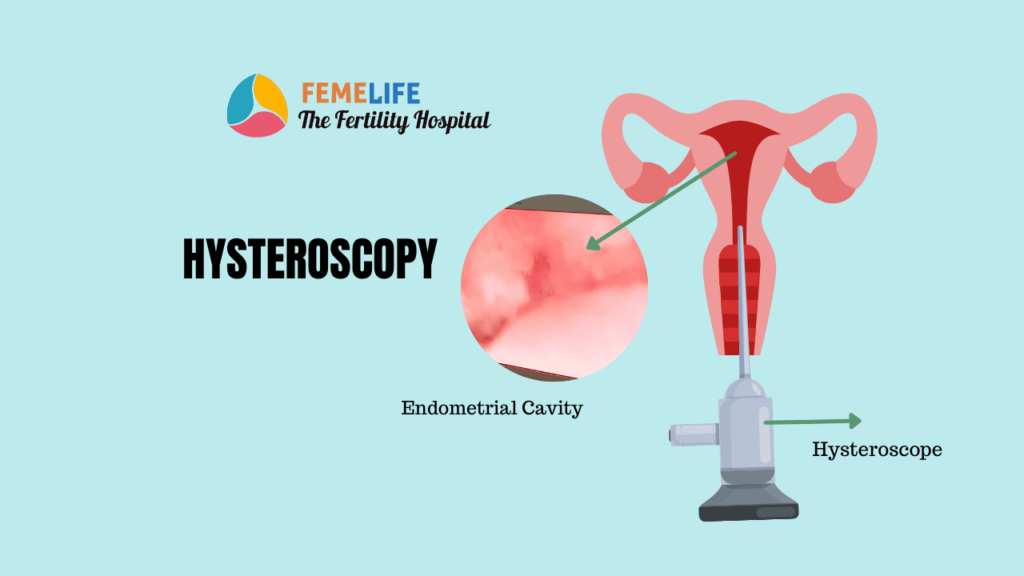Hysteroscopy is a direct method to look into the uterine cavity. It enables us to see the shape, size, contour and color of any abnormal conditions. The blood supply patterns can also be studied. Your doctor can study the endometrium with this hysteroscopy. Infections of the endometrium and fallopian tube can also be diagnosed with cytobrush during hysteroscopy. Your doctor can see and feel the problems and changes in the endometrium directly. Hysteroscopy as such is possible in the same sitting along with other diagnostic procedures like laparoscopy. It is a valuable screening procedure and helps in diagnosis after abnormal hysterograms.
What is office hysteroscopy?
Office hysteroscopy is a safe and less invasive procedure like endoscopy. It is highly accurate in diagnosing uterine abnormalities. Your doctor can see the 360 degree view of the endometrial cavity and the endocervical canal. This procedure does not require general anesthesia and the use of an operating room. Hence, it is a cost savings procedure with greater compliance among patients. Use of small and sleek hysteroscopes makes its use possible on an outpatient basis.
This method of treatment is new and highly advanced. Hysteroscopy enables surgeons to perform many operative procedures in an ambulatory setting. It doesn’t cause significant patient discomfort. Office hysteroscopy implies this concept of “see and treat hysteroscopy.”
Diagnostic hysteroscopy
Many conditions of the uterus are better visible through a hysteroscope. Diagnostic hysteroscopy is an accurate and safe method. It is commonly used by gynecologists for disorders like
- Premenopausal or postmenopausal abnormal uterine bleeding
- Thick endometrium
- Endometrial cancer
- Infertility
Why is hysteroscopy done in infertility?
Through Hysteroscopy your doctor can peep into the cavity of the uterus. She introduces the hysteroscope into the uterus through the cervix. Commonly hysteroscopy is done for evaluation of infertility. Your doctor may combine this procedure with endometrial biopsy. Infertility treatment success depends equally on uterine conditions. Reproductive failure in women can be due to uterine pathology like polyps, fibroids, septum or reduced size of uterine cavity. Hence, hysteroscopy is a part of investigative methods before IVF treatment.
before IVF
If you are undergoing IVF treatment your doctor will advise you to go for certain tests to check the uterus and endometrium. Basic investigations will include transvaginal ultrasound to find the thickness of endometrium and the pattern. She may advise a doppler study to see the blood supply of the uterus. Special investigations like saline sonography and HSG can show various lesions inside the uterine cavity. Uterine malformations like polyps, myomas, or uterine septum can harm embryo implantation in IVF treatment. Women with unexplained infertility may have subtle lesions inside the uterus. Women with recurrent implantation failure also need hysteroscopy to see small partitions like septum or adhesions which may need corrections.
Hysteroscopy cost in India
| Procedure | Cost in India |
| Diagnostic hysteroscopy | 20,500 – 25000 |
| Hysteroscopic Polypectomy or myomectomy | 25000 – 39000 |
| Hysteroscopic cannulation of tubes | 20000 – 22500 |
| Ablation of Endometrium | 35000- 39500 |
| Septal Resection/ Foreign body removal | 25600- 28150 |
Advantages
Many conditions are treatable through hysteroscopy. Conditions like hysterectomy are avoidable if your doctor performs a simple hysteroscopic procedure. Hysteroscopic transcervical endometrial resection is an alternative procedure for bleeding disorders in women like menorrhagia. Because of the accurate diagnosis and safety of this procedure your doctor may prefer this method over other operative methods to avoid unnecessary hysterectomy.
Which conditions can be cured with hysteroscopy?
Fertility enhancing hysteroscopic procedures are common in infertility workup for diagnosis of uterine factors.
- Asherman’s syndrome – Operative hysteroscopy is now the preferred method of treatment of Asherman’s syndrome.
- Intrauterine partitions or septum – Lysis of intrauterine adhesions, metroplasty with resection of uterine septum is possible through operative hysteroscope.
- Removal of foreign bodies – Your doctor uses hysteroscope to remove foreign bodies like misplaced cuT
- Uterine polyps and submucous myomas- Electro resection of fibroids and polyps can remove small fibroids and polyps distorting the cavity.
For abnormal uterine bleeding
Women over the age of 45 years old often have on and off vaginal bleeding. It can also affect 25% of young women. Your doctor will advise transvaginal ultrasonography (TVS) with or without saline solution infusion as a first line diagnosis. However, hysteroscopy has certain advantages in this setting. It is an outpatient office procedure for direct biopsy after visualization of the endometrial cavity. Small cervical or endometrial polyps which may be missed in TVS can be directly seen with hysteroscopy. Your doctor can also remove these abnormal growths and send for biopsy at the same time. Early diagnosis and treatment prevents further growth and progression to cancer in these women with abnormal uterine bleeding.
In patients with endometrial cancer
Some women may have a dreadful cancer condition of endometrium. This type of cancer at times remains silent without any symptoms. In some cases it causes abnormal bleeding usually as a first symptom. Early diagnosis can help a woman’s survival and progress. Endometrial hyperplasia or thick endometrium is a precursor of endometrial cancer. Thick endometrium is the most important sign of endometrial cancer or endometrial hyperplasia in an ultrasound exam. It needs further investigation to find the presence of cancer tissue. Also post menopausal women with endometrial thickness of greater than 4 mm can harbour this cancer. Through hysteroscopy your doctor can clearly see the nature and extent of involvement.
Complications
As of now, it is considered a safe procedure. Although minimal complications are possible, at least 99% of these complications are preventable. These complications are avoidable with vigilance and are treatable. Hysteroscopy undoubtedly is a better method of diagnosis due to direct visualization. Due to the safety and accuracy it has an important place in gynaecological surgery. Definitely hysteroscope is a complimentary to all gynecologic investigations and treatment.

